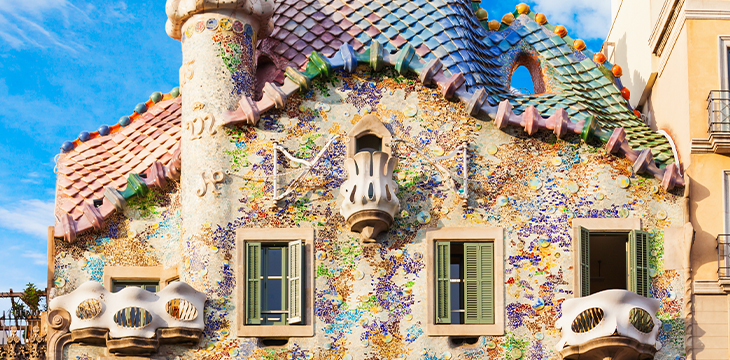
|
Getting your Trinity Audio player ready... |
Dr. Craig S. Wright’s latest blog post, “Art Nouveau,” walks readers through the philosophy and reason behind a handful of international art styles, beginning with art nouveau. Wright’s article takes a deep dive into the apparent influences of each art style and explores the potential reasons that the artist made with their design choices.
“Art Nouveau captured the accurate naturalism developed in the time following scientific advances such as those made by Darwin. Geographic variations may be most vividly exposed in reviewing the designs present in Vienna and Paris,” Dr. Wright wrote. “in the USSR, we see the metro stations reflecting an ultra-modern view of a futuristic society that never developed.”
In nearly every instance, Wright said the design was influenced by nature, the zeitgeist of the era, or design choices that preceded the design being built.
“The renovation by Gaudí (1904-6) of the urban townhouse Casa Batlló demonstrates the use of modern materials in the development of an elfin fairyland. The Catalonian nationalist history and eclectic mix of concepts and materials, integrating stone and wrought iron, wood, and plaster, all crafted to the highest level, encapsulates a dreamlike state of an organic, living system,” Wright said.
“The design is one that appears to have been grown rather than built. The renovation of the formally austere building, designed in 1877 by Emilio Sala Cortés (Antoni Gaudí’s architectural professor), allowed the student to take a basic building and demonstrate how he could infuse late aspects and create a work of imagination and creativity,” he added.
Although Dr. Wright’s piece revolves around architecture styles, it had a solid reminiscence for the creation of digital art in the NFT space.
The parallels
There are many similarities in the evolution of international art design and the market for digital art NFTs. In each instance, artists have been influenced by the era they live in, the styles and methods that have worked in the past, and their imaginations. Like international art design, many of the creators in the world of NFTs found that copying the work of a previous artist while altering a few variables is a recipe for success.
Dr. Wright’s article does not venture to the topic I will discuss next, but there comes the point in time when following the formula for success yields diminishing returns—and that is where the NFT market is at.
The novel, innovative, and unique pieces of art were copied by other designs and led to an over-saturation of designs in the market for NFTs; this has led to a market that has been far less successful than the market for NFTs just a few months prior.
Instead of taking that as a signal that NFTs are dead, it’s a signal that suggests that NFTs need to evolve.
“Futuristic art movements including Fauvism, Cubism, and Bauhaus were born out of the imagination inspired by a system that merged the old and the new, the ancient and the future,” Dr. Wright said.
For NFTs to thrive, they would benefit from applying that methodology. Because for the NFT sector to be successful in the future, artists will need to become creative in a way that previous NFT designers were not; this can be accomplished if they apply more entirely new principles than old principles to their creations.
Interested in learning more about the evolution of international art design? You can find out more by reading Dr. Craig S. Wright’s latest blog post, “Art Nouveau,” on CraigWright.net.
Watch: CoinGeek New York panel, The New World of NFTs
Recommended for you
Lorem ipsum odor amet, consectetuer adipiscing elit. Elit torquent maximus natoque viverra cursus maximus felis. Auctor commodo aliquet himenaeos fermentum
Lorem ipsum odor amet, consectetuer adipiscing elit. Accumsan mi at at semper libero pretium justo. Dictum parturient conubia turpis interdum

 11-22-2024
11-22-2024


